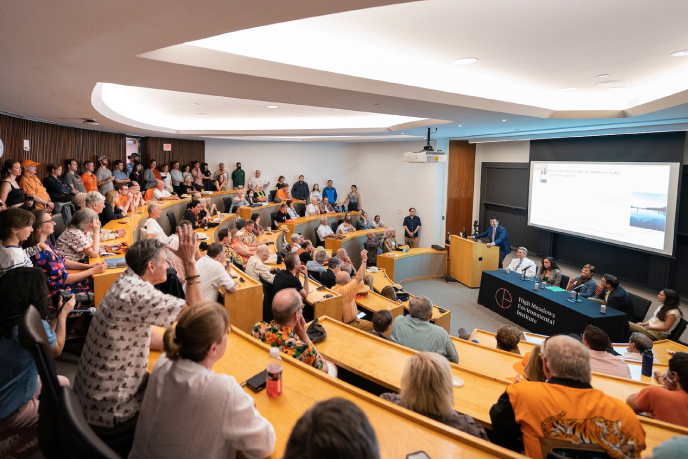Rebecca Cho ’


Geosciences
Reconstructing the Marine Environmental Changes Across the Cretaceous-Paleogene Mass Extinction With Nitrogen Isotopes in Planktonic Foraminifera
Reconstructions of how marine environments responded to past global disturbances can improve our understanding of the modern ocean. Foraminifera, marine microorganisms with calcium carbonate shells, preserve records of past ocean conditions in their shells. Approximately 66 million years ago, the Cretaceous-Paleogene mass extinction event caused significant ecological turnover and impacted the ocean’s biogeochemical cycling. Analyzing the nitrogen isotopic signatures of organic matter bound in foraminiferal shells from this period allows us to infer how this event impacted the marine nitrogen cycle and oxygenation. I assisted in generating the nitrogen isotope records of fossil planktonic foraminifera shells preserved in deep ocean sediment from western North Atlantic Ocean Drilling Program sites by washing and sieving bulk sediment to collect foraminifera shells and assisted with chemical cleaning and subsequent isotope analysis. I developed skills for the preparation of geologic marine sediments, foundational laboratory procedures in geochemistry, and a novel method for nitrogen isotope analysis developed in the Sigman Laboratory and its application to marine nitrogen cycling dynamics. This experience solidified my interest in paleoceanography and geochemical reconstruction with biological proxies and I plan to pursue research of similar significance to ascertain historical associations between the ocean and environmental perturbations.
2023
Oceans and Atmosphere
Sigman Research Laboratory, Department of Geosciences, Princeton University - Princeton, New Jersey
Daniel Sigman, Dusenbury Professor of Geological and Geophysical Sciences, Professor of Geosciences; Crystal Rao, Ph.D. candidate, Geosciences



